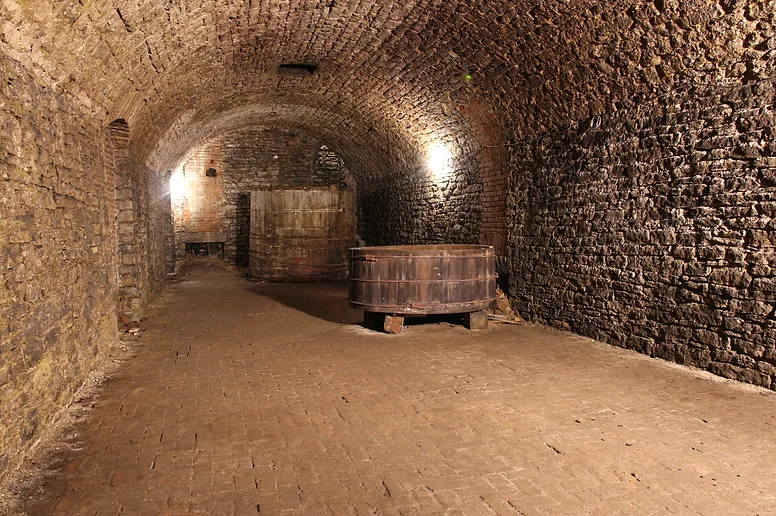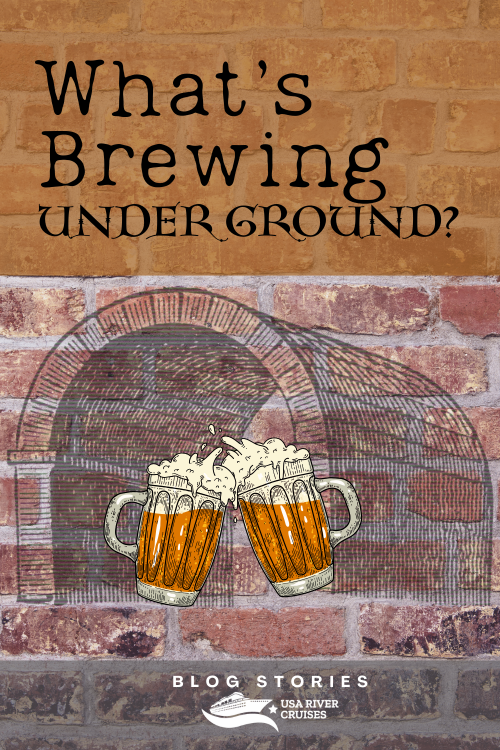Cincinnati, Ohio
The combination of summer heat and winter snow can make for challenging conditions for most people. Even more so for those trying to make a living brewing beer. For hundreds of years, alcohol was the safest choice for drinking – safer than the local water which was often contaminated. Immigrants coming from Europe had brought their love of beer with them, and quickly set up shop. But where can a brewer go when they’ve moved to the climate extremes of the midwest? In search of stable air temperatures, brewers and winemakers discovered long ago that underground is the place to be. Dive 40 feet below the street level to discover the hidden tunnels under the city of Cincinnati.
Called lagering tunnels, they were used to hold giant vats to contain the beer as they let the magical process of yeasts and water combining to create the well-loved brews. While ales can ferment at room temperature, lagers require cooler temperatures, and thus they headed underground. One well known brewery who used tunnels was the Linck Brewery, who built their tunnels around 1855. The Linck brothers opened a brewery in Over-the-Rhine, a working class German neighborhood in Cincinnati and located their lagering tunnels next to Findlay Market – a public market still in use today. Although the brewery itself closed in 1860, the lagering tunnels were rented by several different brewers over the subsequent years.

The tunnels were in use for several decades until the start of Prohibition in 1920. By the time Prohibition ended in 1933, more modern methods of commercial refrigeration had become common, eliminating the need for underground tunnels. The tunnels became basically useless, and so many were filled, destroyed, or covered over as brewery workers not surprisingly preferred working above ground. The empty tunnels were soon forgotten.
Fast forward to 2016 when the tunnel was rediscovered during construction. Imagine coming across a bricked underground cavern – it must have felt much like stumbling across an Egyptian tomb or something straight out of the movie National Treasure. Inside the tunnel, they found the original old fermenting tanks made of wood still intact – ghostly remnants of a time gone by.
But what was found inside the fermenting tanks makes for an unusual story too. In 2017, a local beer historian Michael D. Morgan and a team of fellow beer brewing enthusiasts went into the tunnels to document and attempt to collect artifacts directly from the tanks. They swabbed spigots and vats to attempt to collect remnants of the yeast left behind. Yeast has an amazingly long life span, for example baker’s yeast is estimated to be able to live 800 years. Much like sourdough starter which can be kept going for years and years, these beer archeologists hoped to be able to recreate a batch of beer using the same strain of yeast collected from these ancient vats.
Although several samples failed, they did manage to rescue one yeast sample. This strain of yeast was successfully propagated, cultivated, and grown on in order to create a special beer that has been humorously named “Missing Linck” Beer. In 2019 the Cincinnati City Council voted to declare June 1, 2019 “Missing Linck Day” to celebrate this unique yeast strain and the city’s extensive history of beer making.
If you can arrange to be in Cincinnati on June 1st, you can attend the annual festival to try a sample of the beer too! If you can’t make it on June 1st, there are ongoing tours of the tunnels available and you can visit the brewery involved in discovering the strain at the Urban Artifact Brewery. For lovers of science, brewing, history, genealogy, or those who generally just love lager, you will enjoy taking a tour of the tunnels and diving into the German beer making history found alive and well in Cincinnati’s Over-the-Rhine neighborhood.
Save this story to Pinterest for future reference:



